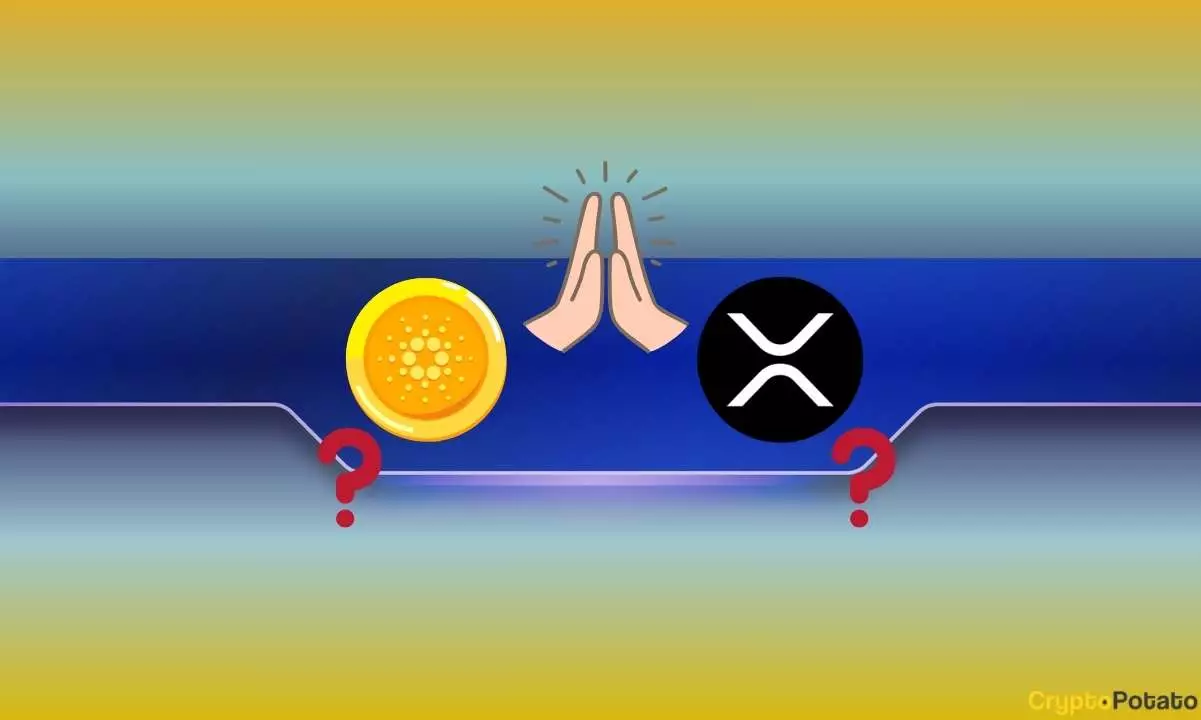In the evolving landscape of cryptocurrencies, rivalries often overshadow potential collaborations. Recently, a surprising shift in dynamics emerged between Charles Hoskinson, the founder of Cardano, and Ripple’s CEO, Brad Garlinghouse. Historically, the relationship between these two figures has been tumultuous, with Hoskinson publicly criticizing Ripple’s community for their perceived toxicity. This backdrop makes Hoskinson’s recent overtures towards collaboration particularly noteworthy. His apology regarding past remarks about XRP signifies a transformative moment and raises questions about what this new partnership could entail.
During a recent discussion, Hoskinson praised Garlinghouse as “a great CEO,” highlighting a mutual respect that had previously been absent. Garlinghouse reciprocated the sentiment, advocating for unity within the crypto community to establish clear regulatory frameworks. This conversation marks a significant pivot from their past interactions where animosity reigned, suggesting that both leaders now recognize the importance of collaboration in the face of industry-wide challenges.
The context of these discussions also hints at a shared interest in regulatory reform. Both Hoskinson and Garlinghouse have expressed intentions to work alongside political figures in shaping a more favorable regulatory environment for cryptocurrencies. This ambition could serve as a common ground for both companies to explore joint ventures, particularly as they navigate the complexities of a rapidly evolving regulatory landscape.
The enthusiasm didn’t stop with Hoskinson’s compliments. A subsequent conversation with Ripple CTO David Schwartz revolved around innovative projects, including Cardano’s privacy-focused sidechain, Midnight, and XRP. Hoskinson characterized this exchange as “wonderful,” and Schwartz echoed the sentiment, providing further momentum to the speculation of a partnership. Such technical discussions reinforce the idea that both companies may be seriously considering collaborative possibilities, particularly in areas of technological advancement and innovation.
Despite the positive exchanges, the crypto community remains cautiously optimistic about the prospects of a formal partnership between Ripple and Cardano. Previous tensions, particularly Hoskinson’s sentiments about the Ripple community, make it essential for both parties to acknowledge and navigate their historical grievances. Hatchets must be buried, and bridges built if meaningful collaboration is to materialize.
With the technological innovations that Cardano and Ripple represent, the integration of their resources could produce significant advancements in the blockchain space. The potential for shared research, development, and resources could revolutionize their respective ecosystems. However, this collaboration must be approached with sincerity, as past hostilities may still linger in the minds of their communities.
The recent discussions between Hoskinson and Ripple’s leadership suggest a possibility of newfound alliances in a market often driven by rivalry. If they successfully navigate their historical conflicts and focus on shared goals, this partnership could herald a new chapter not just for Ripple and Cardano, but for the entire cryptocurrency ecosystem at large. Only time will reveal if these tentative steps will evolve into a robust collaboration that reshapes the blockchain landscape for the better.

